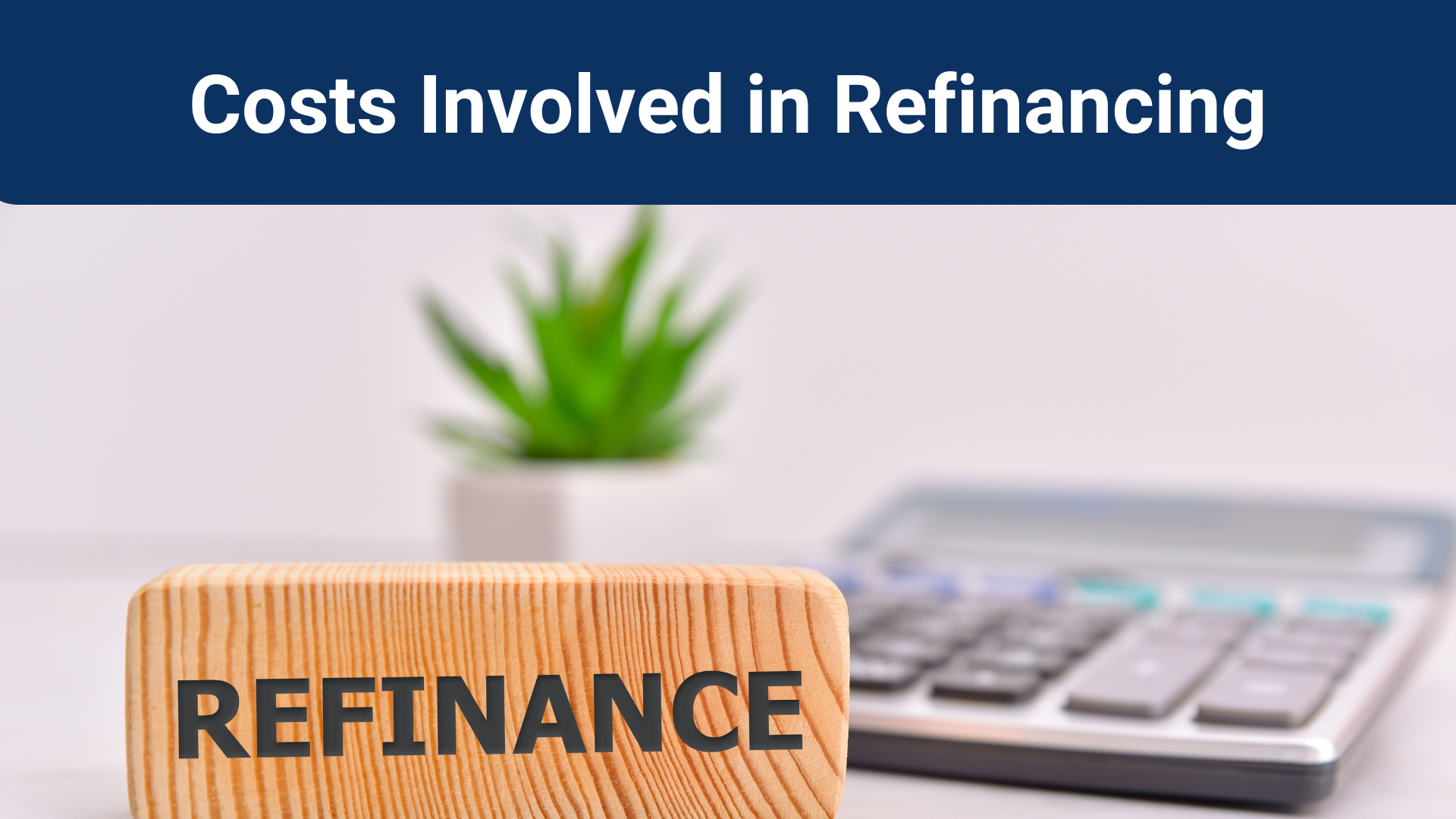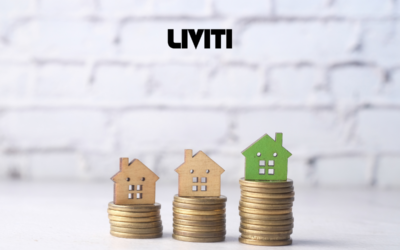Navigating the world of home loans can be complex.
Refinancing your mortgage or home loan can unlock potential savings and benefits.

But what does it mean to refinance a mortgage?
In simple terms, it’s about replacing your existing loan with a new one. This new loan could have more favourable terms, lower interest rates, or both.
The decision to refinance is a significant one. It can lead to substantial savings over the life of your loan. However, it’s not a decision to be taken lightly.
This comprehensive guide aims to demystify the process. It will provide you with the knowledge you need to make an informed decision.
Let’s unlock the potential of your savings and benefits today.
Understanding Refinance Mortgage: A Primer
Refinancing a mortgage involves taking out a new loan to pay off your existing one.
The goal is to secure better loan terms or lower interest rates.
But why would you want to do this?

There are several reasons.
- Lower interest rates: If interest rates have dropped since you took out your loan, refinancing could save you money.
- Better loan terms: You might want to switch from a variable rate to a fixed rate, or consider a fixed-rate home loan for more predictable repayments.
- Access to equity: If your home has increased in value, you could access this equity by refinancing.
- Debt consolidation: If you have other debts, you could consolidate them into your mortgage, potentially lowering your overall interest payments.
However, refinancing isn’t always the best option. It’s important to consider the costs involved and whether the potential savings outweigh these costs.
The Mechanics of Refinancing Your Home Loan
So, how does refinancing work?
First, you’ll need to shop around. Compare the interest rates and terms offered by different lenders.
Once you’ve found a loan that suits your needs, you’ll apply for it, considering the loan amount and how it fits your financial situation. The new lender will pay off your existing loan, and you’ll start making repayments to them instead.

It’s important to note that refinancing doesn’t mean you’re getting rid of debt. You’re simply moving it from one lender to another.
The process can take several weeks, so it’s important to be patient.
Remember, the goal is to end up in a better financial position than you were before.
When Should You Consider Refinancing?
Knowing when to refinance can be tricky.
A good rule of thumb is to consider it if interest rates have dropped significantly since you took out your loan, or if you find more competitive home loan interest rates available.
You might also consider refinancing if your financial situation has changed. For example, if you’ve had a significant increase in income, you might want to refinance to a shorter loan term.
On the other hand, if you’re struggling with repayments, refinancing to a longer-term could lower your monthly repayments.
Finally, if your home has increased in value and you want to access the equity, refinancing could be a good option.
Remember, every situation is unique. It’s important to consider your own circumstances and financial goals.
Evaluating Your Refinancing Options
When it comes to refinancing, one size does not fit all.
Different lenders offer different products, each with its own set of features, rates, and fees.
It’s crucial to evaluate these options carefully to find the one that best suits your needs and compare home loans to ensure you are getting the best deal.

Comparing Home Loan Products: Features and Home Loan Interest Rates
When comparing home loan products, there are several factors to consider.
Firstly, look at the interest rates and the comparison rate, which includes fees and charges to give a true cost of the loan. A lower rate can lead to significant savings over the life of the loan.
However, don’t be swayed by rates alone.
Consider the loan’s features. Does it offer the flexibility you need? Can you make extra repayments without penalty? Is there an offset account or redraw facility?
Also, consider the fees. These can include application fees, ongoing fees, and discharge fees.
Remember, a loan with a slightly higher rate but lower fees could end up being cheaper in the long run.
Finally, consider the lender’s reputation. Do they have good customer service? Are they easy to contact? Do they have a history of hiking rates?
How to Use Refinance Mortgage Calculators
Refinance mortgage calculators can be a useful tool in your decision-making process.
They can help you estimate your potential savings and break-even point.
To use one, you’ll need to input details about your current loan and the new loan you’re considering.
This might include your current loan balance, interest rate, monthly repayment, and the remaining term.
For the new loan, you’ll need to input the proposed interest rate, term, and any fees.
The calculator will then estimate your new monthly repayment and total interest cost.
Remember, these are estimates. Your actual savings will depend on a range of factors, including changes in interest rates and how long you keep the loan.

The Financial Implications of Refinancing
Refinancing your mortgage can have significant financial implications.
While it can potentially save you money, it’s not without costs, such as lender’s mortgage insurance if your deposit is less than 20% of the property’s value.
Understanding these costs and how they impact your finances is crucial to making an informed decision.
Understanding the Costs Involved in Refinancing, Including Lenders Mortgage Insurance
Refinancing involves several costs.
These can include application fees, valuation fees, and settlement fees.
Some lenders may also charge a discharge fee for closing your old loan.
If you have a fixed-rate loan, you may also have to pay break costs.
These fees are charged by the lender if you pay off your loan early during the fixed rate period.

Here are some common costs involved in refinancing:
- Application fee: This is charged by the new lender to process your application.
- Valuation fee: This covers the cost of valuing your property.
- Settlement fee: This is charged by the new lender to settle your new loan.
- Discharge fee: This is charged by your old lender to close your loan.
- Break costs: These are charged if you pay off a fixed-rate loan early.
Remember, these costs can add up.
It’s important to factor them into your calculations when deciding whether to refinance.
Calculating Your Break-Even Point
When considering refinancing, it’s important to calculate your break-even point.
This is the point at which the savings from your new lower rate offset the costs of refinancing.
To calculate this, divide the total cost of refinancing by the monthly savings from your new loan.
The result is the number of months it will take to recoup the costs of refinancing.
If you plan to sell your home or refinance again before reaching this point, refinancing may not be worth it.

Securing the Best Refinance Deal
Securing the best refinance deal requires research and negotiation.
It’s not just about finding the lowest interest rate.
You also need to consider the loan features, such as offset accounts, redraw facilities, and flexible repayment options, fees, and the lender’s reputation.
Strategies for Negotiating with Lenders
Negotiating with lenders can help you secure a better refinance deal.
Start by researching the market and understanding what other lenders are offering.
Then, approach your current lender and ask if they can match or better these offers.
Remember, lenders want to keep your business.
They may be willing to offer you a better deal to prevent you from switching to another lender.
Don’t be afraid to negotiate on all aspects of the loan, not just the interest rate.
This includes fees, loan features, and repayment terms.

The Role of Mortgage Brokers in Refinancing
Mortgage brokers can play a crucial role in the refinancing process.
They have access to a wide range of loan products and can help you find the best deal.
However, it’s important to understand that brokers earn commissions from lenders.
Ensure you choose a broker who is reputable and transparent about their fees and commissions.
Final Considerations Before Refinancing
Before you decide to refinance, it’s crucial to consider your long-term financial goals.
Perhaps you want to tap into your home equity to fund a renovation or investment or purchase an investment property. Refinancing can offer immediate financial relief, but it’s not always the best long-term solution.
Consider the total cost of the loan, not just the immediate savings.
Assessing Your Long-Term Financial Goals
Your long-term financial goals should guide your refinancing decision.
Are you looking to pay off your mortgage faster?
Or are you seeking to reduce your monthly repayments to free up cash flow?
Perhaps you want to tap into your home equity to fund a renovation or investment.
Understanding your goals will help you choose the right refinance product.
The Impact of Refinancing on Your Mortgage Term and Principal and Interest Repayments
Refinancing can significantly impact your mortgage term and repayments.
Switching to a lower interest rate can reduce your monthly repayments, making your home loan repayments more manageable.
However, extending your loan term to achieve lower repayments can result in you paying more interest over the life of the loan.
It’s crucial to consider these trade-offs before making a decision.
Conclusion: Is Refinancing Right for You?
Refinancing your mortgage can unlock significant savings and benefits. However, it’s not a one-size-fits-all solution.
Your financial situation, goals, and the current market conditions should guide your decision. Always consider the long-term implications and consult with a financial advisor if needed. With careful planning and consideration, refinancing can be a powerful tool to optimise your home loan and achieve your financial goals.

Frequently Asked Questions
- How to refinance a mortgage?
Refinancing a mortgage involves replacing your current loan with a new one, usually to secure better terms or lower interest rates. Begin by researching and comparing home loans using a home loan calculator to estimate potential savings. Next, gather your financial documents and apply for a refinance loan. Consider the costs such as application fees, valuation fees, and lender’s mortgage insurance.
It’s also essential to check the loan amount and ensure it aligns with your personal financial circumstances. Once approved, your new lender will pay off your existing home loan, and you’ll start making repayments to them. - How to refinance a mortgage loan?
To refinance a mortgage loan, first, compare home loans from different lenders to find the best home loan interest rates and terms. Use tools like a home loan calculator to understand the financial impact. Collect your financial information and apply for a new loan. Be mindful of potential fees, including discharge fees from your current lender and application fees for the new loan.
After approval, the new lender will settle your old loan, and you’ll begin making repayments under the new terms, potentially lowering your monthly payments. - How to refinance a home mortgage?
Refinancing a home mortgage starts with comparing home loans to find a lower interest rate or better terms. Use a home loan calculator to determine your potential savings. Prepare necessary documentation, including income verification and property value assessments.
Apply for the new loan and wait for conditional approval. After completing the process, the new loan will pay off the old one, and you’ll make payments to the new lender. Consider the long-term benefits and costs, such as ongoing monthly fees and potential savings on your interest bill. - How to refinance a home mortgage?
Begin by researching and comparing home loan rates using a home loan calculator to assess potential savings. Gather your financial documents and ensure your credit score is in good shape. Apply for a new home loan, considering the fixed interest rate or variable rate options.
Factor in the costs like application fees, valuation fees, and any break costs if your existing loan has a fixed rate period. Once the new loan is approved, it will pay off the existing mortgage, and you’ll start repaying the new lender, ideally at a lower interest rate. - When to refinance mortgage?
Consider refinancing your mortgage when interest rates have significantly dropped since you took out your loan. It’s also beneficial if your financial situation has improved, such as an increase in income, allowing you to opt for shorter loan terms or better home loan features.
Use a home loan calculator to see if the potential savings outweigh the costs of refinancing. Additionally, refinancing can be advantageous if you want to switch from a variable rate to a fixed rate home loan or if your property value has increased, providing more equity. - Can I refinance my mortgage?
Yes, you can refinance your mortgage if you meet the lender’s criteria, including having a good credit score and sufficient equity in your home. Use a home loan calculator to evaluate the potential savings and costs. Ensure your loan amount aligns with your financial goals and consider factors like home loan interest rates and ongoing fees.
Refinancing can help lower your monthly repayments or switch from a variable rate to a fixed rate. Consult with home loan specialists to understand your options and secure the best deal. - How long does it take to refinance a mortgage?
The refinancing process typically takes 30 to 45 days, but it can vary depending on the lender and your financial situation. Start by comparing home loans and gathering the necessary documentation, such as proof of income and property value assessments. After submitting your application, the lender will review it and conduct a valuation of your property.
Once approved, the new loan will pay off your existing home loan, and you’ll start making repayments to the new lender. Using a home loan calculator can help streamline the process by providing a clear picture of potential savings. - How often can you refinance a mortgage?
There are no legal limits on how often you can refinance your mortgage, but it’s important to consider the costs and benefits each time. Use a home loan calculator to evaluate potential savings and costs, such as application fees, valuation fees, and lenders mortgage insurance.
Frequent refinancing might not be beneficial if the costs outweigh the savings. Ensure that refinancing aligns with your long-term financial goals and consider consulting with home loan specialists for personalised advice. - How to mortgage refinance?
To refinance your mortgage, start by using a home loan calculator to compare home loans and determine potential savings. Gather your financial documents, including proof of income and property valuation. Apply for a new home loan, considering both fixed rate and variable rate options.
Review the costs involved, such as application fees and lenders mortgage insurance. Once approved, the new loan will pay off your existing mortgage, and you’ll begin making repayments under the new terms, ideally reducing your monthly payments or securing better loan features. - How do I refinance my mortgage?
Refinancing your mortgage involves several steps. Begin by comparing home loans using a home loan calculator to identify potential savings. Gather necessary documents, such as income statements and property valuations. Apply for the new loan and wait for approval, considering factors like fixed interest rates or variable interest rates.
Be aware of costs, including application fees, valuation fees, and discharge fees. Once the new loan is approved, it will pay off your existing home loan, and you’ll start making repayments to the new lender. - When can you refinance a mortgage?
You can refinance a mortgage at any time, but it’s often most beneficial when interest rates drop significantly or if your financial situation improves. Use a home loan calculator to assess potential savings and compare home loans.
Refinancing can also be a good option if your home has increased in value, providing more equity. Ensure you consider the costs involved, such as application fees and lenders mortgage insurance. Timing is crucial to maximise the benefits and savings. - How to refinance a mortgage?
To refinance a mortgage, start by using a home loan calculator to compare home loans and understand potential savings. Gather your financial documents and ensure your credit score is in good shape. Apply for the new loan, considering fixed rate or variable rate options and the costs involved.
Once approved, the new lender will pay off your existing mortgage, and you’ll begin making repayments under the new terms. Evaluate the long-term benefits and ensure refinancing aligns with your financial goals. - How to refinance my mortgage?
Begin by researching and comparing home loans using a home loan calculator to see potential savings. Gather necessary documents like income proof and property valuations. Apply for a new loan, considering the terms and interest rates.
Be aware of the costs, including application fees, valuation fees, and potential discharge fees from your current lender. Once approved, the new lender will pay off your existing mortgage, and you’ll start making repayments to them, ideally at a lower interest rate or better terms. - How much can I borrow home loan?
The amount you can borrow for a home loan depends on factors like your income, credit score, existing debts, and the property’s value. Use a home loan calculator to get an estimate. Lenders also consider the loan-to-value ratio (LVR), which is the loan amount compared to the property value.
Generally, a higher deposit can increase your borrowing capacity. Consult with home loan specialists to understand your borrowing power and compare home loans for the best options. - How much can I borrow for home loan?
Your borrowing capacity for a home loan depends on your income, expenses, credit score, and the property’s value. Use a home loan calculator to estimate how much you can borrow. Lenders typically look at your loan-to-value ratio (LVR) and may offer more favourable terms if you have a larger deposit.
It’s also important to compare home loans and consider ongoing fees and home loan interest rates. Consulting with a mortgage broker can provide more personalised insights into your borrowing potential. - How much deposit do I need for a home loan?
Generally, you need a deposit of at least 20% of the property’s value to avoid paying lenders mortgage insurance (LMI). However some lenders offer loans with lower deposits, but this may require LMI.
Use a home loan calculator to determine the deposit amount needed. Compare home loans to find the best options for your deposit amount. - How to get a home loan?
To get a home loan, start by assessing your financial situation and using a home loan calculator to determine your borrowing capacity. Improve your credit score by paying off existing debts and saving for a deposit. Gather necessary documents, such as income proof and bank statements.
Apply for pre-approval to understand how much you can borrow. Finally, compare home loans from different lenders to find the best terms and interest rates, and submit your application. - How to refinance a home loan?
Start by using a home loan calculator to compare home loans and estimate potential savings. Gather financial documents and ensure your credit score is in good condition. Apply for a new loan, considering factors like fixed interest rates or variable interest rates.
Be mindful of the costs involved, such as application fees, valuation fees, and discharge fees from your current lender. Once approved, the new loan will pay off your existing home loan, and you’ll start making repayments to the new lender. - What is an LVR home loan?
LVR stands for Loan to loan-to-value ratio, which is the loan amount divided by the property value, expressed as a percentage. It helps lenders assess the risk of a home loan. A lower LVR typically means less risk for the lender and may result in better home loan interest rates.
For example, an 80% LVR means you’re borrowing 80% of the property’s value. Use a home loan calculator to understand how different LVRs impact your loan options. - How much deposit for a home loan?
Generally, a deposit of 20% of the property’s value is recommended to avoid paying lenders mortgage insurance (LMI). However, some lenders offer home loans with lower deposits, which may require LMI. Use a home loan calculator to estimate the deposit amount needed. Compare home loans to find the best terms based on your deposit amount. - What is a refinance home loan?
A refinance home loan replaces your existing mortgage with a new one, typically to secure better interest rates or terms. Use a home loan calculator to compare home loans and understand potential savings. Refinancing can lower your monthly repayments, switch from a variable to a fixed rate, or access home equity.
Consider the costs, including application fees, valuation fees, and potential discharge fees. Consult with home loan specialists to determine if refinancing is beneficial for your financial situation. - How do home loans work?
Home loans provide funds to purchase property, with repayments typically made over 25-30 years. They can have fixed or variable interest rates, affecting monthly payments. Use a home loan calculator to estimate your repayments. Factors like your credit score, income, and property value determine loan approval.
Lenders may also require a deposit, usually around 20% to avoid lenders mortgage insurance. Compare home loans to find the best terms for your situation. - How to calculate home loan interest?
Calculate home loan interest by using a home loan calculator. Input your loan amount, interest rate, and loan term. The calculator will estimate your monthly repayments and total interest payable over the life of the loan.
For more precise calculations, consider the type of interest rate (fixed or variable) and any fees. Regularly reviewing your home loan can help you understand how changes in interest rates affect your repayments.




